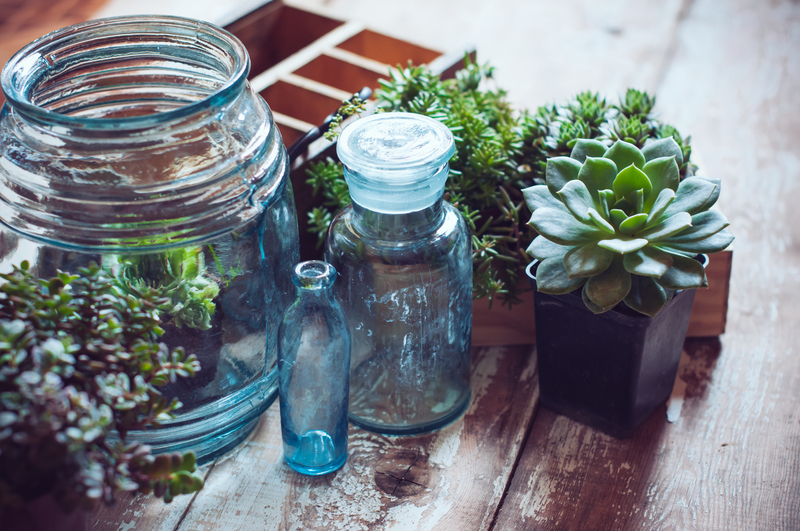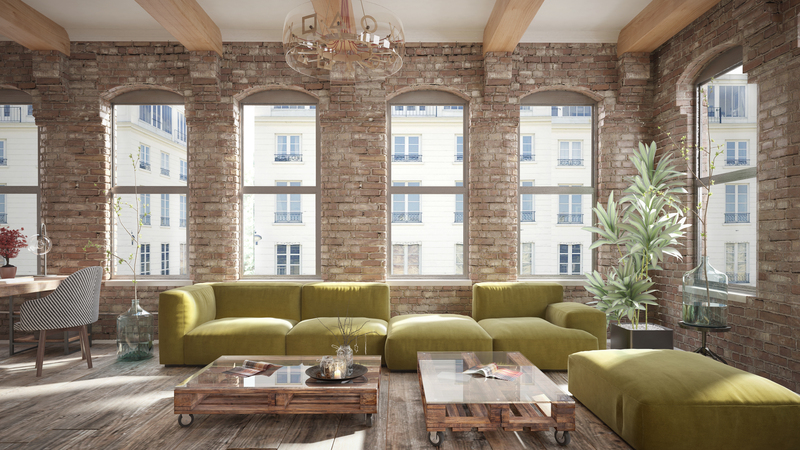Transforming Discarded Objects Into Artistic Masterpieces Through Upcycling
Transforming discarded objects into artistic masterpieces through upcycling has emerged as a fascinating global movement. As environmental concerns intensify, creative minds explore innovative ways to turn trash into treasures, breathing new life into what was once considered worthless. This comprehensive article explores the upcycling phenomenon, showcases its impact on the art world, and offers actionable tips for anyone eager to give unwanted items a new purpose while making a statement.

Understanding Upcycling: Beyond Recycling
To appreciate the journey of discarded objects being transformed into art, it's vital to distinguish upcycling from mere recycling. While recycling deconstructs materials for re-manufacturing, upcycling takes intact items or waste and elevates their value by imbuing them with creativity, functionality, or aesthetics.
- Recycling: Breaks down products into raw materials, which may degrade over time.
- Upcycling: Uses items in their existing form to create something new, often with a higher artistic, cultural, or functional value.
Transforming unwanted objects into art means celebrating imperfections. The scars, rust, and weathered textures become an integral part of upcycled artistic creations, making each piece unique.
Why Upcycle? The Environmental and Social Impact
Every year, billions of tons of waste end up in landfills, polluting air, soil, and water. Upcycling offers a dual benefit: reducing landfill waste and minimizing the need for new material production. Here's why upcycling discarded items into art matters:
- Reduces waste: Keeps objects out of landfills, lessening environmental burden.
- Conserves resources: Minimizes energy and raw materials required for manufacturing new goods.
- Promotes creativity: Encourages innovative thinking and artistic exploration.
- Inspires communities: Fosters community involvement, collaboration, and education through creative upcycling projects.
The Artistic Perspective: Creativity Without Borders
For artists, transforming discarded materials into art offers endless opportunities for self-expression. The limitations imposed by found objects challenge artists to think differently, using form, function, and context to transform the ordinary into the extraordinary.
- Cultural significance: Upcycled art often tells a story about local history, social issues, or environmental awareness.
- Personal expression: Every upcycled piece embodies the artist's vision and perception of value.
Notable Upcycled Art Projects Around the World
Artists globally have embraced the challenge of creating masterpieces from waste, converting cast-offs into installations, sculptures, and functional artworks. These projects inspire communities and raise awareness about environmental responsibility.
1. Bordalo II's Trash Animals (Portugal)
Portuguese artist Bordalo II is famous for his large-scale animal sculptures made entirely from urban waste--old bumpers, tires, appliances, and scrap metal. His pieces not only celebrate wildlife but also highlight the issues of pollution and habitat loss due to human activity.
2. Las Fallas Festival, Valencia
During Valencia's famous spring festival, massive installations of upcycled papier-mache, cardboard, and collected wood rise throughout the city. While many are eventually burned in traditional bonfires, the process showcases creativity and resourcefulness in repurposing discarded materials.
3. Aurora Robson's Plastic Sculptures
Canadian-American artist Aurora Robson intercepts plastic waste before it reaches oceans and transforms it into stunning installations, chandeliers, and sculptures. Her work brings urgent attention to plastic pollution, marrying environmental activism with fine art.
4. Jane Perkins: Recycled Portraits (UK)
Jane Perkins specializes in intricate portraiture constructed from miscellaneous found objects--buttons, beads, toy parts, and jewelry. Her whimsical, detailed pieces reinterpret iconic images, proving that discarded objects can become masterpieces in the right hands.
Techniques for Turning Discarded Objects Into Art
The possibilities are limitless when it comes to upcycling random items into creative masterpieces. Here are popular techniques used by artists and crafters:
- Assemblage: Combining unrelated found objects to create a unified artwork, often as wall hangings or sculptures.
- Mosaic: Using broken ceramics, glass, and tiles from discarded sources to craft patterned surfaces.
- Collage: Layering upcycled materials such as old newspapers, magazines, textiles, or packaging on a canvas to form visual stories.
- Sculpture: Carving, welding, or joining scrap metal, wood, or plastic into three-dimensional art.
- Functional Art: Repurposing objects into furniture, lighting fixtures, and everyday accessories with an artistic twist.
Experimenting with
DIY Guide: Start Your Upcycled Art Journey
Eager to try transforming your own discarded items into art? Here's a step-by-step guide to kickstart your creative upcycling journey, whether you're a novice or a seasoned artist.
Step 1: Gather Inspiration
- Visit local art galleries, museums, or online platforms like Pinterest and Instagram.
- Study the work of renowned upcycling artists for fresh ideas.
- Keep a visual journal of interesting found objects or concepts.
Step 2: Collect Materials
- Scout yard sales, thrift shops, and recycling centers for inspiring cast-offs.
- Sort items by material: metals, plastics, wood, ceramics, textiles.
- Always clean and sanitize discarded objects before use.
Step 3: Plan Your Creation
- Sketch your vision, considering how the objects' existing forms can contribute to the piece.
- Decide on the purpose: functional item, decorative piece, or conceptual art.
- Select your tools and adhesives according to the materials involved.
Step 4: Create and Refine
- Assemble, glue, weld, paint, and decorate your materials as needed.
- Embrace imperfections--they add character and uniqueness.
- Allow for experimentation and serendipity during the process.
Step 5: Share Your Artwork
- Display your upcycled masterpieces at home, in community exhibits, or online.
- Document your process to inspire others and highlight the environmental benefits.
- Consider collaborating with local artists, schools, or environmental organizations for wider impact.
With each piece, you're not only creating art but also sparking important conversations about consumption, waste, and sustainability.
Transforming Discarded Objects Into Art: Sustainable Benefits
- Eco-conscious statement: Upcycled art sends a powerful message about resourcefulness and environmental stewardship.
- Economic potential: Artists and entrepreneurs can build brands, sell unique products, and reduce costs through effective upcycling.
- Community engagement: Group projects and workshops foster sustainability education and creative empowerment.
- Emotional fulfillment: Transforming trash into beauty offers a sense of accomplishment and intrinsic value.
Supporting a Circular Economy
Transforming discarded items into artistic masterpieces supports the concept of a circular economy, where objects are kept in use for as long as possible, their value continually enhanced.
Famous Upcycled Masterpieces Throughout History
Upcycling may seem modern, but artists have long experimented with found objects and repurposing in their creative practice.
- Marcel Duchamp's Readymades: Early 20th-century French-American artist Duchamp famously presented everyday objects, like the bicycle wheel and urinal ("Fountain"), as art, challenging definitions and setting the stage for upcycling's legitimacy.
- Pablo Picasso: The Spanish master used discarded bicycle seats and handlebars to create his iconic "Bull's Head" sculpture.
- Louise Nevelson: Known for monumental wall assemblages using found wood pieces, Nevelson's work exudes drama and complexity from humble cast-offs.
Today, this lineage continues as artists worldwide repurpose industrial remnants, electronic waste, marine debris, and virtually anything into inspired, meaningful art.
How to Support the Upcycled Art Movement
Are you passionate about converting waste into artistic treasures? Here's how you can champion the upcycled art movement:
- Buy upcycled art: Support local and global upcycling artists by purchasing their work for your home or office.
- Attend exhibitions: Visit museums, galleries, and community shows featuring art made from discarded materials.
- Host workshops: Organize or join upcycling workshops in your community to foster creativity and teach sustainability skills.
- Share stories: Promote upcycled art on social media to raise awareness and spark dialogue on responsible consumption.
Tips for Creating Your Own Upcycled Masterpieces
Embracing upcycling as an artistic practice is rewarding and accessible. Consider these tips for success:
- Start simple: Use familiar objects--bottles, cans, old clothes--for beginner projects.
- Mix materials: Combine different textures and objects for dynamic results.
- Look for inspiration everywhere: From nature walks to garage sales, fresh possibilities abound.
- Think beyond function: Even non-functional items can become stunning abstract or conceptual art.
- Emphasize sustainability: Highlight the origins and purpose of your materials whenever you display or sell your work.

Conclusion: The Power of Upcycling in Art
The process of transforming discarded objects into artistic masterpieces is more than a trend--it's a transformative mindset. Through upcycling, we not only reduce waste but also tap into greater creativity, challenge perceptions of value, and contribute to a sustainable future. Each upcycled artwork is a testament to human ingenuity and a gentle yet powerful protest against throwaway culture.
Whether you're an artist, collector, or concerned global citizen, embracing the world of upcycled art invites you to see beauty where others see only waste. Unlock your creativity, transform your world, and inspire change--one discarded object at a time.
Frequently Asked Questions
- What is upcycling in art? Upcycling in art refers to repurposing discarded objects or materials into creations that have higher artistic, functional, or aesthetic value.
- How do you start upcycling art? Begin by collecting interesting discarded materials, planning your project, and experimenting with different crafting or artistic techniques.
- Why is upcycled art important? It plays a key role in promoting environmental sustainability, creative thinking, and conscious consumption.
- Can anyone make art from discarded objects? Yes! With imagination and basic tools, anyone can transform waste into meaningful artworks.
Embark on your upcycling journey and help build a more vibrant, sustainable, and imaginative world through art.